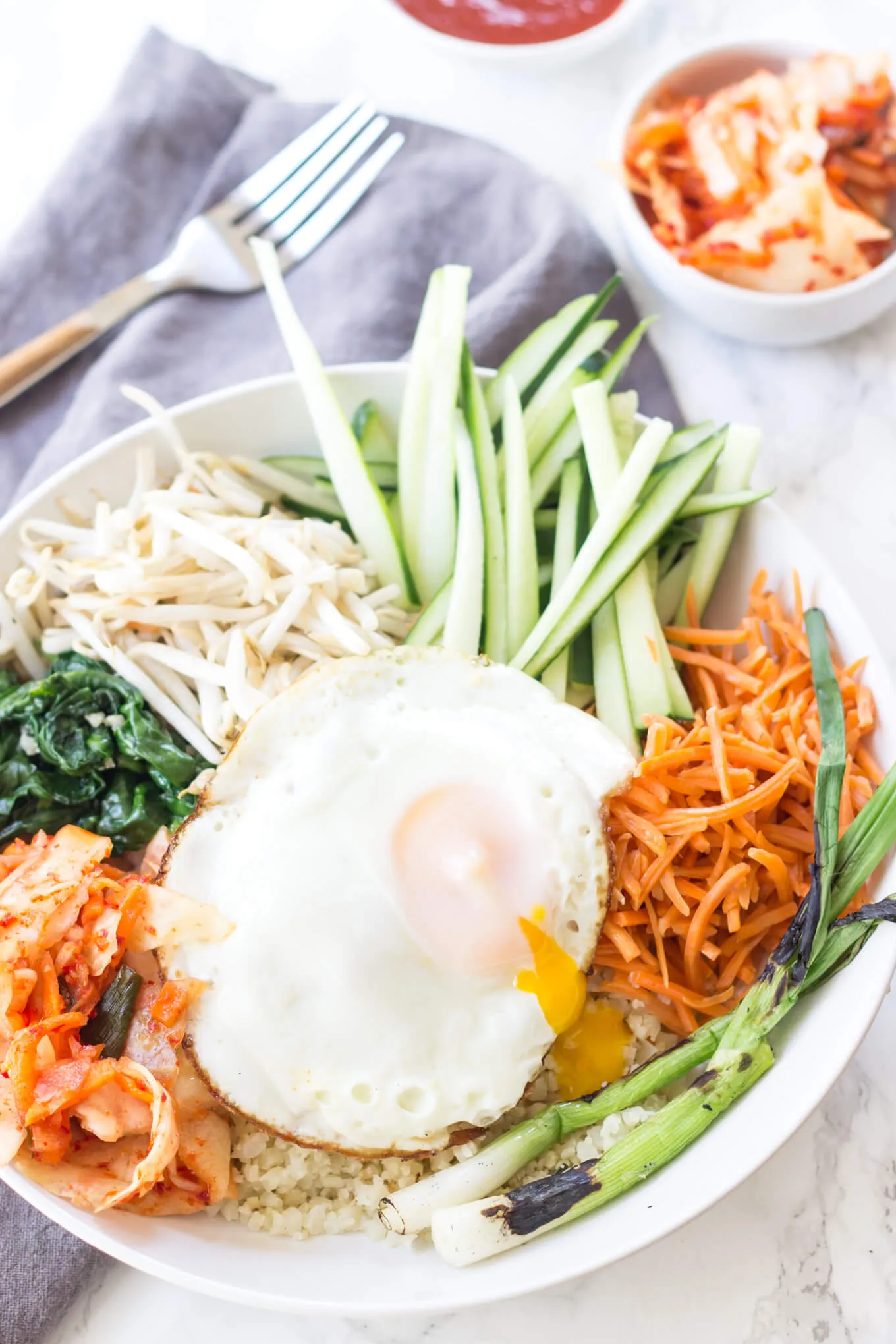Dive into the vibrant world of Korean cuisine with our delicious Vegan and Paleo Bibimbap! This colorful dish not only tantalizes your taste buds but also aligns perfectly with your health goals. Packed with nutrient-rich vegetables and a spicy kick from gochujang, this recipe is a feast for the eyes and a delight for the palate. Whether you're a seasoned vegan or simply looking to explore new flavors, this bibimbap will have you coming back for seconds. Ready to elevate your dinner game in just 35 minutes? Let’s get cooking!
Prep Time: 15 mins
Cook Time: 20 mins
Total Time: 35 mins
Cuisine: Korean
Serves: 2 servings
Ingredients
- 1 cup cauliflower rice
- 1 cup spinach, sautéed
- 1 carrot, julienned
- 1 zucchini, julienned
- 1/2 cup mushrooms, sliced
- 2 tablespoons gochujang
- 1 tablespoon sesame oil
- Sesame seeds for garnish
Instructions
- Prepare all vegetables by washing and cutting them into thin julienne strips. Slice mushrooms into thin slices.
- Heat a large non-stick skillet over medium heat. Add sesame oil and begin by sautéing the julienned carrots for 2-3 minutes until slightly softened but still crisp.
- Remove carrots and set aside. In the same skillet, sauté zucchini for 2-3 minutes until tender, then remove and set aside.
- Add sliced mushrooms to the skillet and cook for 3-4 minutes until they release their moisture and become golden brown.
- Quickly sauté spinach in the skillet for 1-2 minutes until just wilted, then remove and set aside.
- Prepare cauliflower rice by pulsing cauliflower florets in a food processor until they resemble rice-like grains. Sauté in the skillet for 3-4 minutes until lightly cooked.
- Arrange cauliflower rice as the base in two serving bowls. Carefully place each vegetable on top in separate sections.
- Drizzle gochujang sauce over the vegetables and cauliflower rice, ensuring even distribution.
- Garnish with sesame seeds and serve immediately while vegetables are still warm.
Tips
- Prep Ahead: To save time, wash and cut all your vegetables in advance. Store them in the refrigerator until you're ready to cook.
- Sautéing Technique: Make sure your skillet is hot before adding the sesame oil and vegetables. This helps to achieve that perfect tender-crisp texture.
- Cauliflower Rice: For the best results, pulse the cauliflower florets in small batches to ensure even rice-like grains. Avoid over-processing to prevent a mushy texture.
- Customize Your Veggies: Feel free to swap in your favorite vegetables or whatever you have on hand. Bell peppers, bok choy, or even broccoli can make great additions.
- Serving Tip: For an authentic touch, serve your bibimbap in a hot stone bowl (dolsot) if you have one. This will keep your dish warm and create a delicious crispy rice layer at the bottom.
- Spice It Up: Adjust the amount of gochujang to your spice preference. If you like it spicy, don’t hold back!
- Garnishing: Add some sliced green onions or a sprinkle of nori for an extra layer of flavor and a pop of color.
Nutrition Facts
Calories: 120kcal
Carbohydrates: 15g
Protein: 5g
Fat: 7g
Saturated Fat: 1g
Cholesterol: 0mg


